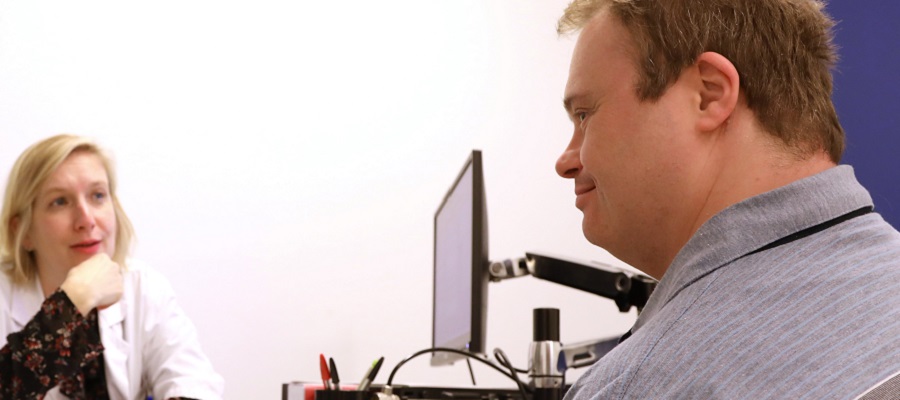The Project
The Jérôme Lejeune Institute is participating in the IMATAU auxiliary study as an investigating center, in collaboration with the department of memory and language neurology at Sainte-Anne Hospital in Paris and the French Alternative Energies and Atomic Energy Commission.
This project is based on the following observations:
Adults with trisomy 21 have a higher risk of developing Alzheimer’s disease. The aim of the IMATAU project is to identify the risk factors in subjects with trisomy 21 who are clinically free of Alzheimer’s disease.
Following on from HORIZON 21, this information will help improve our knowledge of the mechanisms in Alzheimer’s disease and may enable therapies to be offered for Alzheimer’s disease.
Study Objectives
With this in mind, IMATAU has 3 objectives:
To analyzethe severity of amyloid and tau deposits together with brain atrophy in an adult population with trisomy 21 clinically free of Alzheimer’s disease.
To put forward the hypothesisthat tau PET imaging will enable tau protein deposits to be detected at a preclinical stage of Alzheimer’s disease, and that the protein deposits will be associated with medial temporal cortical atrophy.
Then to comparethe regional distribution of tau and amyloid deposits measured by PET and the cortical atrophy profile measured by MRI of the trisomy 21 population with an age-matched control group, and with young patients suffering from sporadic Alzheimer’s disease.
Study Description
IMATAU is assessing the quantification and distribution of the AV-1451 marker for tau protein in the brain region without dementia of patients with trisomy 21, compared to healthy subjects of the same age.
In a second phase, IMATAU will analyze the relationships between the tau protein marker and fibrillar amyloid deposits, one of the biological markers appearing in the preclinical phase of Alzheimer’s disease.
Finally, the quantitative changes and regional accumulation of AV-1451 in patients with trisomy 21 will be assessed two years later by comparing them with healthy subjects of the same age.

